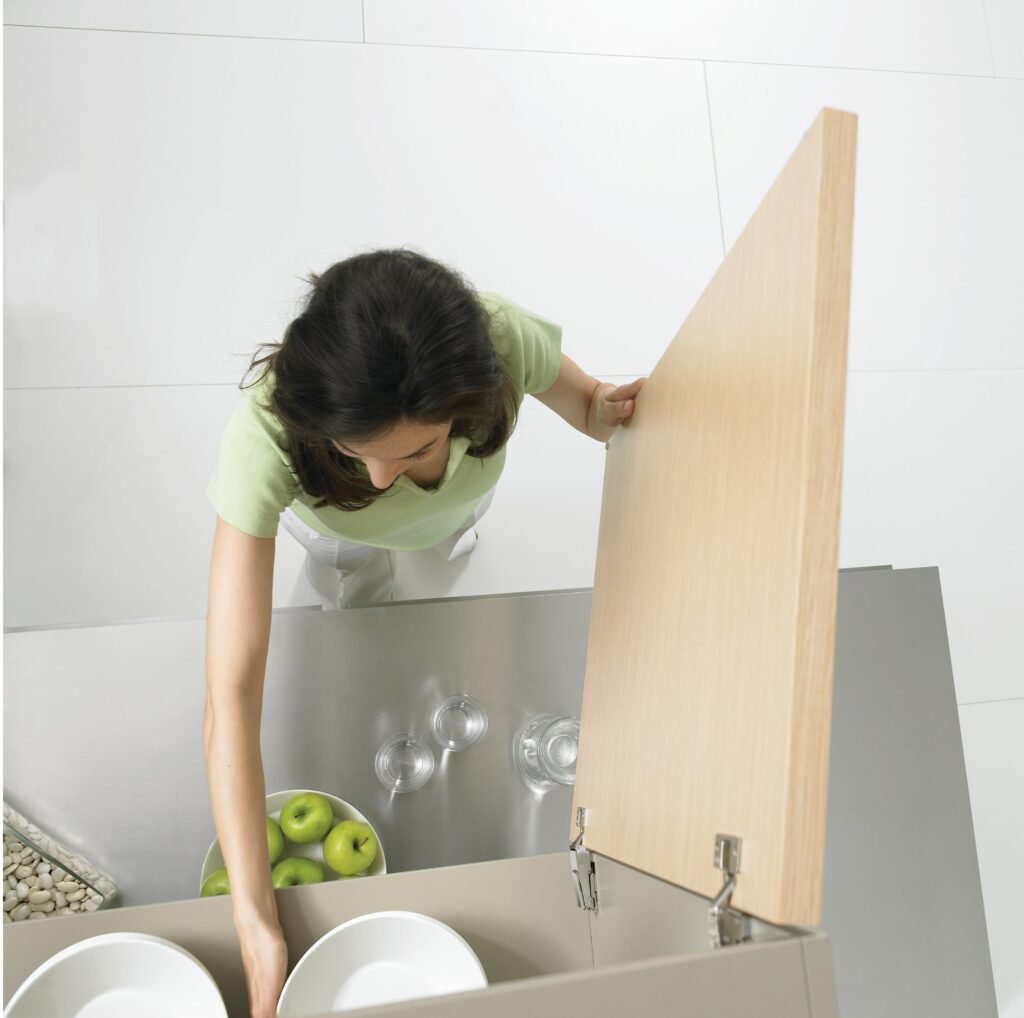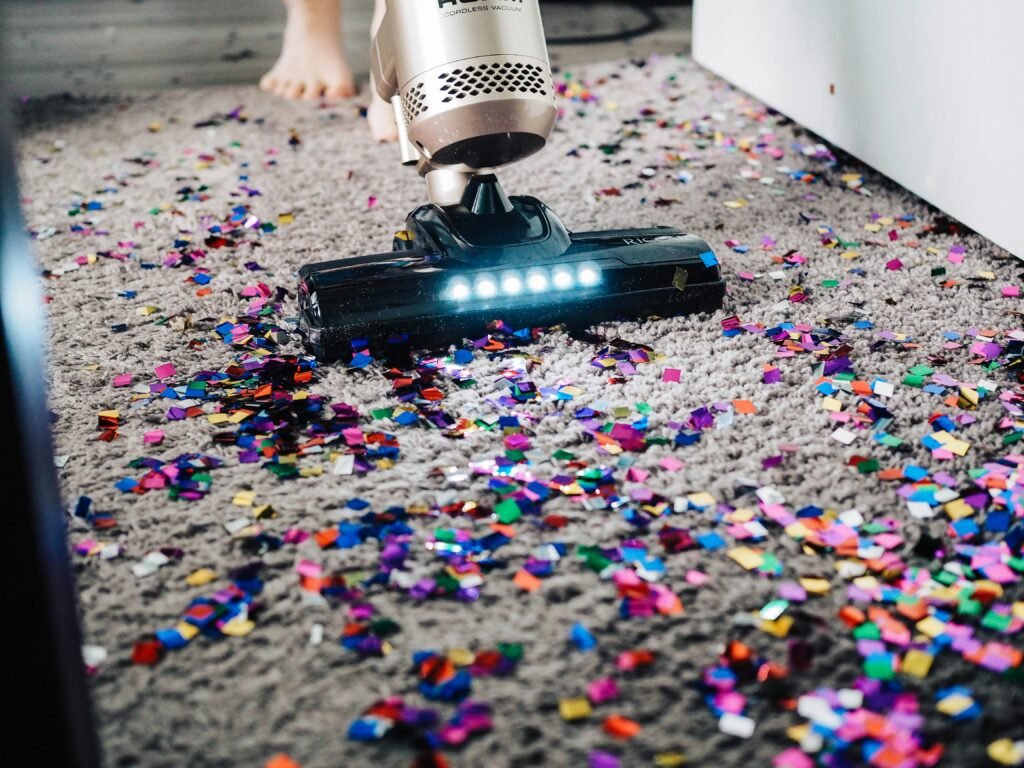You’ve already honed your marksmanship skills and become an expert with firearms, but have you mastered the art of gun cleaning? In this article, we will explore advanced tips and techniques that will take your gun cleaning skills to the next level. From the importance of using specialized cleaning tools to understanding the intricacies of different gun types, we will equip you with the knowledge and techniques needed to properly maintain and care for your firearms. So, grab your favorite cleaning kit and get ready to elevate your gun cleaning game to expert level.
Choosing the Right Cleaning Tools

This image is property of images.unsplash.com.
Selecting the appropriate cleaning rod
When it comes to cleaning your firearms, choosing the right cleaning rod is essential. A cleaning rod helps remove fouling and debris from the barrel of your firearm. It is crucial to select a cleaning rod that is the correct length and material for your specific firearm. Cleaning rods are commonly made from materials such as stainless steel or carbon fiber. Stainless steel rods are durable and resistant to bending, while carbon fiber rods are lightweight and reduce the risk of barrel damage. Consider the length of the cleaning rod as well; a rod that is too short may not effectively clean the entire length of the barrel.
Optimal brushes and bore snakes
Once you have selected the appropriate cleaning rod, it is important to have the right brushes and bore snakes on hand. Brushes come in various sizes and materials, such as bronze or nylon. Bronze brushes are excellent for removing stubborn fouling, while nylon brushes are gentler and ideal for delicate parts. Bore snakes, on the other hand, are an innovative tool that simplifies the cleaning process. These flexible, rope-like devices are inserted into the barrel and pulled through, effectively removing debris and fouling in one swift motion. Having a combination of brushes and bore snakes in your cleaning kit will ensure that you can tackle any type of cleaning job.
Patches and cleaning jags for effective maintenance
To achieve a thorough clean, you’ll need patches and cleaning jags. Patches are usually made of cotton or synthetic materials and are used to apply solvents or lubricants to the inside of the barrel. They also help remove excess fouling and debris. Cleaning jags, on the other hand, are attachments that fit onto the end of the cleaning rod and hold the patch in place. They ensure that the patch makes full contact with the bore and helps with the cleaning process. When selecting patches and cleaning jags, it is important to consider the caliber of your firearm, as different sizes will require different tools. Keep a variety of sizes in your cleaning kit to ensure you have the appropriate tools for each of your firearms.
Understanding the Importance of Solvents and Lubricants
Differentiating solvents and lubricants
Solvents and lubricants are two crucial components of firearm maintenance. It’s important to understand the difference between the two. Solvents are designed to break down and remove fouling, carbon deposits, and dirt from various parts of the firearm. They aid in the cleaning process by dissolving residue and making it easier to remove. Lubricants, on the other hand, reduce friction between moving parts, preventing wear and ensuring smooth operation. They protect vital components from excess heat and corrosion. While some products may combine solvents and lubricants, it is important to use them separately to achieve the best results.
Choosing the right solvent for your firearm
When it comes to choosing the right solvent for your firearm, it’s essential to consider the type of fouling you’re dealing with, as well as the material of the firearm. Solvents come in various formulations, each designed for specific purposes. For example, copper solvents are designed to remove copper fouling, while carbon solvents are effective at removing carbon deposits. It’s important to refer to the manufacturer’s recommendations and select a solvent that is safe to use on your specific firearm. Always follow the instructions provided and exercise caution when using solvents, as some may be harsh and require proper ventilation or protective gear.
Using lubricants to reduce friction and protect vital components
Proper lubrication is vital for the longevity and performance of your firearm. When applying lubricants, focus on areas where metal rubs against metal. This includes slide rails, trigger mechanisms, and other moving parts. Applying a thin layer of lubricant will help reduce friction and ensure smooth operation. It’s important not to over-lubricate, as excess lubricant can attract dirt and debris, leading to malfunctions. Additionally, make sure to use lubricants specifically designed for firearms, as they are formulated to withstand high temperatures and not break down over time. Regularly inspect your firearm and reapply lubricant as necessary to maintain optimal performance.
Disassembly and Reassembly Techniques
Understanding the firearm’s design and mechanism
Before attempting to disassemble or reassemble your firearm, it is essential to have a solid understanding of its design and mechanism. Familiarize yourself with the firearm’s manual and study it thoroughly. Take note of the various components and how they interact with each other. Understanding how your firearm functions will not only help you safely disassemble and reassemble it but also enable you to identify any potential issues or malfunctions.
Step-by-step disassembly instructions
Disassembling a firearm requires patience and attention to detail. It is crucial to follow the manufacturer’s instructions precisely to avoid damaging the firearm or injuring yourself. Begin by removing the magazine and ensuring that the firearm is unloaded. From there, follow the step-by-step instructions provided in the manual. Pay close attention to any specific tools or techniques required for disassembly. Take your time and be mindful of small springs or pins that may become dislodged during the process. Keep a clean workspace and organize the disassembled parts to make reassembly easier.
Reassembling the firearm correctly
Reassembling a firearm can be a challenging task, especially if it is your first time. Take your time and refer to the manufacturer’s instructions to ensure each component is properly aligned and installed. Be mindful of any small springs or pins that may need to be reinserted. Avoid using excessive force during reassembly, as this could cause damage to the firearm. If you encounter any difficulties or are unsure of how a specific part should be installed, consult a professional or firearm expert. Proper reassembly is essential for the safe and reliable operation of your firearm.
Proper Cleaning Procedures for Specific Firearm Types
Cleaning semi-automatic pistols
Semi-automatic pistols require regular cleaning and maintenance to ensure reliable performance. Begin by disassembling the pistol according to the manufacturer’s instructions. Pay special attention to the barrel, slide, and frame, as these areas tend to accumulate significant fouling. Use an appropriate solvent to remove fouling and carbon deposits. Bronze brushes and bore snakes are effective tools for cleaning the barrel. Once the pistol has been thoroughly cleaned, apply a small amount of lubricant to the slide rails and other moving parts. Reassemble the pistol carefully, ensuring each component is properly aligned and functioning. Perform a function check to confirm the pistol is working correctly.
Maintaining revolvers
Revolver cleaning requires attention to detail and a systematic approach. Start by removing the cylinder and any other removable parts according to the manufacturer’s instructions. Pay close attention to the cylinder chambers and the barrel. Use a solvent and brushes to remove fouling, paying particular attention to the rear of the cylinder and the forcing cone. A bore snake can be utilized to clean the barrel effectively. Once cleaned, ensure that all parts are thoroughly dried and apply a light coat of lubricant to the cylinder, crane, and other moving parts. Reassemble the revolver carefully, ensuring each component is properly aligned and functioning. Perform a function check before storing or using the revolver.
Caring for rifles and shotguns
Rifles and shotguns have unique cleaning requirements due to their longer barrels and often more complex actions. Start by disassembling the firearm following the manufacturer’s instructions. Pay close attention to the barrel, chamber, and action areas. Use an appropriate solvent and brushes to remove fouling and deposits. Bore snakes are particularly useful for cleaning the barrel, especially in rifles with longer barrels. After cleaning, ensure that all parts are thoroughly dried and apply a light coat of lubricant to the action, bolt, and other moving parts. Reassemble the firearm carefully, ensuring each component is properly aligned and functioning. Perform a function check before storing or using the firearm.
Thoroughly Cleaning the Barrel

This image is property of images.unsplash.com.
The importance of a clean barrel
The barrel is one of the most critical components of any firearm, and maintaining a clean barrel is essential for optimal performance. A dirty barrel can lead to decreased accuracy, increased fouling, and potentially dangerous malfunctions. Regular cleaning of the barrel helps remove fouling, copper deposits, and carbon buildup, ensuring consistent and accurate shots. Make it a priority to include thorough barrel cleaning in your regular firearm maintenance routine.
Using bore brushes and jags to remove fouling
To effectively remove fouling from your firearm’s barrel, you’ll need to utilize bore brushes and jags. Bore brushes are available in various materials, with bronze being the most commonly used for its excellent cleaning properties. Attach the appropriate-sized brush to your cleaning rod and apply an appropriate solvent. Insert the brush into the barrel and move it back and forth several times, being sure to cover the entire length of the barrel. This will help loosen and remove fouling and deposits. After brushing, use cleaning jags with patches to wipe away any remaining residue, continually replacing the patch until it comes out clean.
Utilizing bore snakes for quick and efficient cleaning
Bore snakes are an excellent tool for quick and efficient barrel cleaning. These handy devices consist of a rope-like material with an integrated bore brush and brass weighted cord. To use a bore snake, simply drop the weighted cord through the barrel, then pull the bore snake through the barrel with one hand while holding the cord with the other. The integrated bore brush helps scrub away fouling, while the cord assists in pulling the bore snake through. Bore snakes are particularly useful when a more thorough cleaning with brushes and jags may not be necessary. They are also ideal for field cleaning, as they are compact and easy to use on the go.
Cleaning Hard-to-Reach Areas
Cleaning the bolt carrier group of rifles
The bolt carrier group (BCG) is a crucial component of rifles, and proper cleaning is essential for reliable function. Start by disassembling the BCG, following the manufacturer’s instructions. Pay close attention to areas such as the bolt, bolt carrier, and gas key. These areas are prone to fouling and require thorough cleaning. Use an appropriate solvent and brushes to remove carbon buildup and debris. Pipe cleaners and cotton swabs are handy tools for reaching tight spaces and corners. After cleaning, ensure that all parts are thoroughly dried and apply a light coat of lubricant to the necessary components. Reassemble the BCG carefully, ensuring proper alignment and functionality.
Reaching intricate parts of handguns
Handguns, particularly semi-automatic pistols, often have intricate internal components that require regular cleaning. Some areas may be challenging to reach, but with the right tools, you can maintain thorough cleanliness. Q-tips or cotton swabs are excellent for reaching tight spaces and corners. Dip them in an appropriate solvent and gently clean hard-to-reach areas, such as the trigger mechanism, slide rails, and firing pin channel. Take special care not to leave any fibers behind, as they can interfere with the handgun’s functionality. Additionally, small nylon or brass brushes can be used for detailed cleaning on intricate parts. Regular maintenance of these hard-to-reach areas will help ensure the longevity and reliability of your handgun.
Cleaning tight spaces in shotguns
Shotguns, especially pump-action or semi-automatic models, have unique cleaning challenges due to their internal mechanisms and the tight spaces they possess. When cleaning shotguns, it’s important to disassemble the firearm according to the manufacturer’s instructions, paying special attention to the chamber and action areas. Utilize a combination of brushes, solvents, and cotton swabs to thoroughly clean these tight spaces. Slotted tips or dental picks can also be useful for removing fouling or debris from hard-to-reach crevices. Take your time and be meticulous in your cleaning efforts, ensuring that all traces of fouling have been removed before reassembling the shotgun.
Inspecting and Cleaning the Firearm’s Action

This image is property of images.unsplash.com.
Removing debris from the action
The action of a firearm, which includes the moving parts responsible for chambering and ejecting rounds, can accumulate debris and dirt over time. It’s important to inspect and clean the action regularly to maintain optimal performance. Begin by disassembling the firearm according to the manufacturer’s instructions. Pay close attention to the action areas, such as the bolt or slide, and remove any visible debris with a soft brush or compressed air. If necessary, utilize an appropriate solvent to dissolve any stubborn fouling. After cleaning, ensure that all parts are thoroughly dried and apply a light coat of lubricant to the action components, ensuring smooth operation.
Applying lubrication to moving parts
One of the critical steps in maintaining the firearm’s action is properly lubricating its moving parts. This includes areas such as slide rails, trigger mechanisms, and bolt carriers. Apply a small amount of lubricant to these components, ensuring a thin and even coat. Be mindful not to over-lubricate, as excessive lubrication can attract dirt and debris. Follow the manufacturer’s recommendations for the type and amount of lubricant to use. Regular application of lubricant will help reduce friction, prevent excessive wear, and ensure the reliable and smooth operation of your firearm.
Troubleshooting common issues
Regularly inspecting and cleaning your firearm’s action can help prevent common issues. However, if you do encounter a problem, it’s important to troubleshoot and address it promptly. If the action feels sluggish or becomes difficult to operate, it may be a sign of inadequate lubrication or excessive fouling. Disassemble the firearm, clean the action thoroughly, and ensure proper lubrication. If the problem persists, consult a professional or firearm expert to diagnose and address the issue. Prompt troubleshooting and maintenance will help prolong the lifespan of your firearm and ensure its safe and reliable operation.
Cleaning and Maintaining Optics and Sights
Cleaning lenses and optics without damaging them
Optics play a crucial role in accurate aiming and target acquisition, and it is essential to keep them clean and well-maintained. When cleaning lenses and optics, it’s important to follow proper techniques to avoid damage. Use a soft lens brush or compressed air to remove any loose debris or dust. Avoid touching the lenses directly with your fingers, as oils and residues can be difficult to remove and may damage the coatings. If necessary, use a clean, lint-free microfiber cloth slightly dampened with an optical cleaning solution to gently clean the lenses. Wipe the lenses in a circular motion, starting from the center and working your way outward. Regular cleaning and careful handling will ensure optimal clarity and performance from your optics.
Maintaining accuracy and zeroing
Accuracy and zeroing are crucial aspects of firearms performance, especially when it comes to long-range shooting. Proper cleaning and maintenance of your optics and sights will help maintain accuracy and ensure consistent zeroing. Regularly inspect your optics for any signs of damage or misalignment. Clean the lenses as mentioned earlier to ensure optimal clarity. Additionally, ensure that all mounting screws are properly tightened to prevent any shifting or movement. If you make any adjustments to your sights or optics, it’s essential to confirm zeroing by firing test rounds at a known distance. Regular maintenance and zeroing checks will help ensure optimal performance and accuracy when using your firearms.
Protecting optical devices during cleaning
Cleaning firearms can be a messy process, and it’s important to protect your optical devices during cleaning to avoid damage. When disassembling your firearm, be mindful of the direction in which solvents or cleaning agents may spray or drip. Consider using protective covers or caps specifically designed for your optics to shield them from potential splatter. Additionally, use caution around optics when handling cleaning rod sections or other tools that could accidentally come into contact with delicate lenses. Taking these precautions will help keep your optical devices clean and undamaged, ensuring their continued performance and longevity.
Preventing Rust and Corrosion
Using rust preventatives and protectants
Rust and corrosion can cause significant damage to firearms, compromising their functionality and aesthetics. Preventing rust and corrosion should be a top priority. Rust preventatives and protectants, such as specific firearm lubricants and oils, are designed to create a barrier between moisture and the metal surfaces of your firearm. Regularly apply a thin coat of rust preventative or protectant to all exposed metal surfaces, including the barrel, receiver, and other components. Make sure to reapply the rust preventative after cleaning, particularly if you have used solvents that may remove any existing protective coating. With regular maintenance and proper use of rust preventatives, you can significantly reduce the risk of rust and corrosion on your firearms.
Storing firearms in a controlled environment
Proper storage plays a crucial role in preventing rust and corrosion. Whenever possible, store your firearms in a controlled environment with stable humidity levels and temperatures. Excess moisture can lead to condensation, which can promote rust and corrosion. Consider investing in a gun safe or a storage case with a dehumidifier or desiccant to help maintain optimal conditions. Keep your firearms away from areas prone to moisture, such as basements or attics, and ensure they are properly cleaned, lubricated, and protected before storage. Regularly inspect your firearms during storage to identify any signs of rust or corrosion and address them immediately.
Routine inspections for rust or corrosion
In addition to preventive measures, routine inspections are essential to catch any signs of rust or corrosion early. Regularly inspect your firearms, paying close attention to metal surfaces for any discoloration or pitting that may indicate rust or corrosion. If you identify any areas of concern, address them promptly with appropriate cleaning and treatment. Utilize cleaning brushes, solvents, and protectants as necessary to remove and prevent the spread of rust and corrosion. Routine inspections, combined with proper maintenance practices, will help preserve the condition and performance of your firearms for years to come.
Advanced Maintenance Techniques
Polishing and deburring internal components
Advanced maintenance techniques, such as polishing and deburring, can enhance the performance of your firearms. Polishing involves smoothing out rough surfaces, eliminating imperfections, and reducing friction. This can be particularly beneficial in areas where components interact, such as trigger mechanisms or slide rails. Use appropriate polishing tools, such as fine-grit sandpaper or polishing compounds, to carefully and incrementally smooth out surfaces. Deburring involves removing sharp edges or burrs that may affect the functionality or safety of your firearm. Specialized deburring tools or files can be used to ensure precise removal of any burrs or rough edges. Exercise caution and refer to manufacturer guidelines, as excessive polishing or deburring can negatively impact the firearm’s reliability.
Replacing worn-out parts and springs
Over time, certain parts and springs in your firearm may become worn-out or lose their tension, impacting performance and reliability. Regularly inspect and evaluate the condition of all components, paying attention to springs, extractors, firing pins, and other high-wear parts. If you notice signs of wear, such as deformation, cracks, or loss of tension, it may be necessary to replace these parts. Consult the manufacturer’s recommendations or seek the assistance of a qualified gunsmith to ensure proper fit and function. Regularly replacing worn-out parts and springs will help maintain optimal performance and reliability, reducing the risk of malfunctions or safety issues.
Enhancing firearm performance through advanced maintenance
Advanced maintenance techniques can go beyond basic cleaning and lubrication to enhance firearm performance. For experienced firearm enthusiasts or competitors, fine-tuning certain components or investing in specialized modifications can make a noticeable difference. Consult with knowledgeable professionals or experts who specialize in firearm customization to explore possibilities such as trigger modifications, recoil reduction systems, or aftermarket barrel upgrades. However, always prioritize safety and be aware of legal restrictions or regulations regarding modifications to firearms. Advanced maintenance techniques should only be performed by individuals with the necessary knowledge and experience to ensure optimal performance, reliability, and safety of the firearm.
In conclusion, mastering the art of gun cleaning requires not only the right tools but also a comprehensive understanding of your specific firearm and its maintenance requirements. Through proper cleaning techniques, regular inspections, and routine maintenance, you can ensure the longevity, reliability, and performance of your firearms. Whether you are a seasoned shooter or a beginner, investing time and effort into proper gun cleaning and maintenance practices will pay off in the form of improved accuracy, increased safety, and prolonged lifespan for your firearms.
